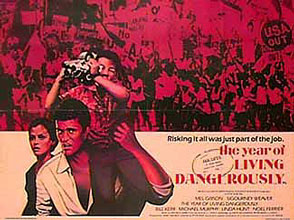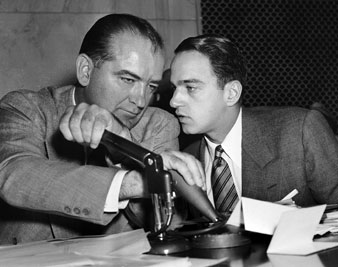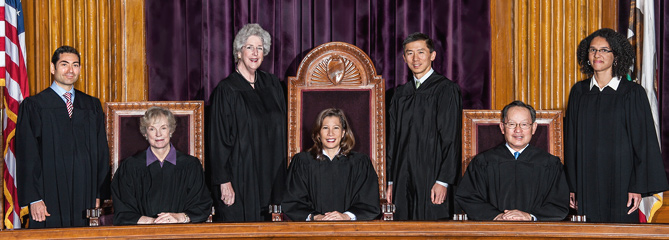Litigation
2016: The Year of Living Dangerously
2015 was a year of forward movement. Much of that could be in jeopardy this year.
We are at the start of a year of danger for environmental policy. 2015 saw many accomplishments in environmental law: the Administration issued the “waters of the United States” and Clean Power Plan regulations, a Supreme Court ruling in favor of EPA’s cross-state air pollution rule, and the Paris Agreement on climate change. Much of this progress is …
Continue reading “2016: The Year of Living Dangerously”
CONTINUE READINGCalifornia Supreme Court Hands Air District, Environmentalists Qualified Win
Justices’ Unanimous Opinion Addresses Key “Scope of CEQA” Issue
In a closely-watched case, the California Supreme Court today issued a unanimous decision on the scope of the California Environmental Quality Act (CEQA), California’s most important and heavily-litigated environmental statute. That decision is unlikely to fully satisfy either side in the litigation, though over the long-term it would seem to favor local regulators and their …
Continue reading “California Supreme Court Hands Air District, Environmentalists Qualified Win”
CONTINUE READINGRoy Cohn and the Trans-Pacific Partnership
“Who Are Those Guys?”
I don’t care what the law says. I want to know who the judge is. — Roy M. Cohn I basically agree with Jim’s and Dan’s assessments of the substantive provisions of the TPP when it comes to environmental issues. (I have real problems with the Intellectual Property provisions, but that is another matter). For …
Continue reading “Roy Cohn and the Trans-Pacific Partnership”
CONTINUE READINGShould the Court Stay the Clean Power Plan?
Opponents need to prove four things to get a stay. They may be unable to prove any of those.
Opponents of EPA’s landmark climate rule, the Clean Power Plan (a/k/a 111(d) regulation), are seeking to stay the effectiveness of the rule. A stay is a variety of preliminary injunction, and the Supreme Court laid down four requirements for such orders in Winter v. NRDC: “A plaintiff seeking a preliminary injunction must establish [1] that he is …
Continue reading “Should the Court Stay the Clean Power Plan?”
CONTINUE READING“Necessary and Appropriate”
EPA has now formally proposed its response to the Supreme Court’s opinion in Michigan v. EPA
Although the Paris talks are justifiably getting the lion’s share of the attention, there have been other significant environmental actions recently. One of those involves the EPA’s effort to reduce toxic emissions from power plants (particularly coal-fired plants). The Clean Air Act gives special treatment to toxic emissions from power plants. Other sources are regulated …
Continue reading ““Necessary and Appropriate””
CONTINUE READINGThe Ninth Circuit Takes EPA to Task (Twice)
EPA’s pesticide registration efforts trigger forceful response
Judge McKeown of the 9th Circuit Court of Appeals recently wrote of the EPA, “Although filibustering may be a venerable tradition in the United States Senate, it is frowned upon in administrative agencies tasked with protecting human health.” Yikes. What did the EPA do to elicit such a reaction from a federal judge? The short …
Continue reading “The Ninth Circuit Takes EPA to Task (Twice)”
CONTINUE READINGClean Power Plan Litigation Kick-Off
Flood of lawsuits follows publication of EPA rules to regulate power-plant GHGs
*Updated: Nov. 17, 2015* On Friday, October 23, 2015, the Federal Register formally published EPA’s rules to control greenhouse-gas emissions from fossil-fuel-fired power plants under the Clean Air Act. I described the basics of the rules after EPA released the unofficial text in August. The final text of the rule to regulate new and modified …
Continue reading “Clean Power Plan Litigation Kick-Off”
CONTINUE READINGCalifornia Supreme Court Continues to Expand Its Environmental Docket
Justices Considering Unprecedented Number & Variety of Environmental Law Issues
At the beginning of 2015, I posted on this site an analysis of the California Supreme Court’s environmental law docket. My conclusion was that California’s highest court was showing unprecedented interest in environmental law–as demonstrated by the fact that it then had pending nine cases arising under the California Environmental Quality Act (CEQA) and 20 …
Continue reading “California Supreme Court Continues to Expand Its Environmental Docket”
CONTINUE READINGDuPont Found Liable In First of 3,500 Lawsuits
Chemical Used in Teflon Linked to Numerous Health Problems, but its Use is Still Legal Under TSCA
Yesterday, a jury in the Southern District of Ohio found DuPont liable for a woman’s kidney cancer in the first of 3,500 suits the company faces. The cases all stem from DuPont’s use and disposal of perflourooctanoic acid (PFOA) or C8. The chemical is used to make Teflon, among other things, and the most recent …
Continue reading “DuPont Found Liable In First of 3,500 Lawsuits”
CONTINUE READINGLost in the Ozone Again
The Ozone Standard, Regulatory Pragmatism, and the Rule of Law
EPA issued a new regulation last week that mandates a reduction in ozone levels to 70 ppm from the current 75 ppm (originally set by the Bush Administration). The new regulation was immediately attacked by industry and environmentalists. According to industry, the regulation will be a job-killing burden on the economy. According to environmentalists, …
Continue reading “Lost in the Ozone Again”
CONTINUE READING












